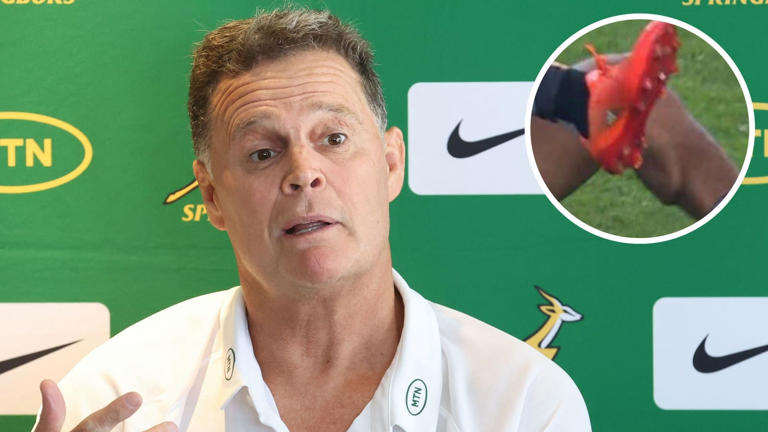What should have been a proud moment for the Sharks after their United Rugby Championship (URC) quarter-final win quickly spiraled into controversy—thanks to a wink, a cramp, and a camera.
At the center of it all is Jaden Hendrikse, the Sharks’ scrum-half and a rising star in the Springboks setup. Late in the game, Hendrikse went down with what appeared to be cramp. As medics rushed to his side, cameras caught him flashing a subtle wink—an expression that ignited accusations of time-wasting and deliberate gamesmanship.
Social media exploded. Critics accused Hendrikse of faking the injury to disrupt play and help secure victory. Supporters called it smart game management. But the real twist came when Springboks head coach Rassie Erasmus entered the conversation.
Erasmus, known for backing his players with intensity, shared an image showing Hendrikse’s leg visibly cramped and tense—strongly implying that the injury was legitimate. While he didn’t mention the wink directly, the message was clear: this wasn’t acting; this was real pain.
The incident, now dubbed ‘Wink-Gate,’ has divided fans and sparked a broader debate about sportsmanship, player welfare, and perception in the age of viral clips. Was Hendrikse managing time or genuinely injured? Should a wink matter if a player is clearly in pain?
What’s undeniable is that rugby is changing. The camera sees everything, and players like Hendrikse live under a microscope. The Springboks and Sharks, both symbols of South African rugby excellence, now find themselves at the heart of a public conversation that stretches far beyond one quarter-final.
And in typical Rassie Erasmus fashion, he isn’t staying silent.
